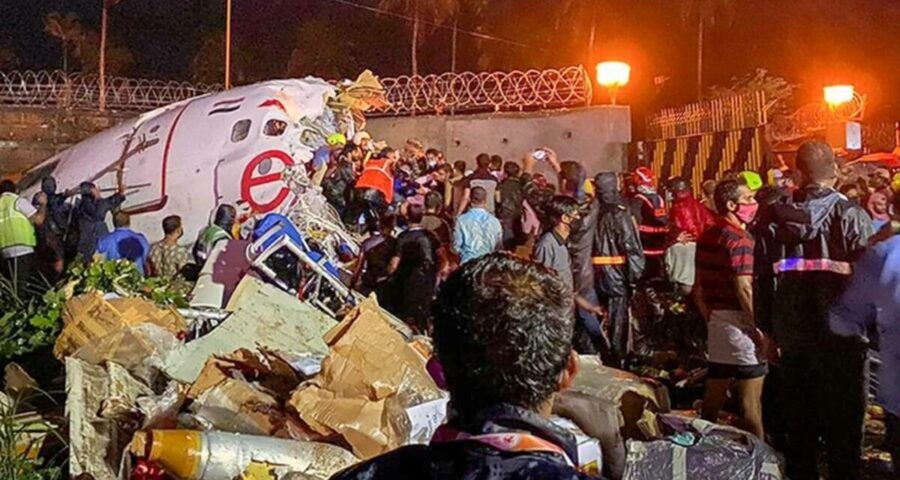A year-long investigation into the Air India Express accident at Kozhikode airport in August last year has revealed non-adherence to the standard operating procedure by the pilot-in-command as the probable cause of the plane crash.
A year-long investigation into the Air India Express accident at Kozhikode airport in August last year has revealed non-adherence to the standard operating procedure by the pilot-in-command as the probable cause of the plane crash. In addition to this, 16 factors including a “faulty” human resources policy at the disinvestment-bound airline, poor crew resource management, lack of updates for the dynamic weather changes and absence of “clear cut guidelines” by the aviation regulator on monitoring of long landings contributed to the crash that killed 21 people, including the two pilots.
The Boeing 737-800 aircraft from Dubai to Kozhikode with 190 people on board on August 7 last year overshot the tabletop runway at its destination and broke into pieces, in what was its second attempt at landing in adverse weather conditions. This flight was operating under the Central government’s Vande Bharat Mission to repatriate Indian citizens stranded abroad on account of curtailed international flights as a result of Covid pandemic.
The Aircraft Accident Investigation Bureau (AAIB), in its 281-page investigation report released on Saturday, noted that the pilot flying, who in this case was the pilot-in-command, continued an unstabilised approach and landed beyond the touchdown zone, “half way down the runway”, despite a call by the co-pilot to ‘Go Around’ — something that warranted a mandatory go around. In the report, laying down the possible cause of the crash, the AAIB has also noted the investigation team was of the opinion that “the role of systemic failures as a contributory factor cannot be overlooked in this accident”.
The investigation body has issued recommendations seeking change in practices across five organisations — Air India Express, the Airports Authority of India, the Directorate General of Civil Aviation, the Indian Meteorological and the AAIB itself.
“A large number of similar accidents/incidents that have continued to take place, more so in AIXL (Air India Express), reinforce existing systemic failures within the aviation sector…these usually occur due to prevailing safety culture that give rise to errors, mistakes and violation of routine tasks performed by people operating within the system. Hence, the contributory factors enumerated below include both the immediate causes and the deeper or systemic causes,” it added.
For example, the investigators have observed that the pilot-in-command “seemed anxious to return to Kozhikode in time and hence his actions and decisions were steered by a ‘misplaced’ motivation to land back at Kozhikode as scheduled”. This was a consequence of “faulty AIXL HR policy which does not take into account operational requirement while assigning permanent base to its Captains”, resulting in unavailability of sufficient number of captains at Kozhikode.
In its recommendations, the AAIB has noted that the airline to take into consideration the quantum of flights originating from respective bases and accordingly assign them as ‘home base’, especially for the captains. At Kozhikode at the time of the crash, there was just one captain to 26 first officers.
On the part of the DGCA, the investigation team has observed that recommendations made with regard to Flight Operations Quality Assurance (FOQA) anomalies, post Air India Express 2010 Mangalore accident, have not been addressed for the last 10 years. It has recommended that the regulator revise certain regulations to remove certain ambiguities. For the AAIB, the probe team recommended providing adequate manpower at the investigation body, while for the AAI, it suggested several training measures and implementing radar upgrades to provide better guidance for pilots in adverse weather conditions.
For the IMD, the report noted that the tower met officer (TMO), was not present at the ATC tower at the time of the accident, despite the weather conditions mandating the officer’s presence there. “It is recommended that the presence of TMO be ensured in the tower along with DATCO (duty air traffic controller), especially during dynamic weather situations,” it said.
Source: Read Full Article


